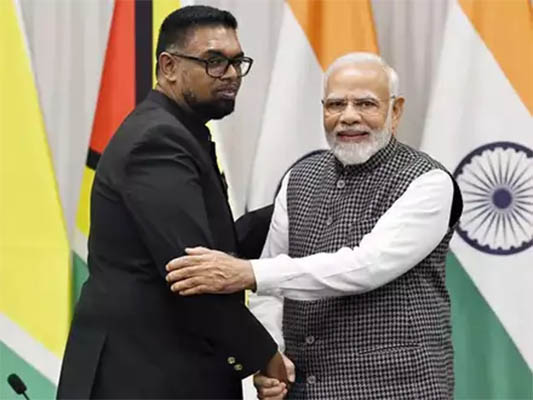Almost three years since Guyana declined to enter into a long-term oil supply deal with India, the issue has arisen again and the government has again poured cold water on the idea. Back in August 2021, a Reuters report had stated that the Government of Guyana had declined to entertain a request from New Delhi for a multi-year oil purchase deal as well as a stake in the country’s wider oil industry. It may have appeared that the conditions for such a deal might be propitious given that in March 2021, India had bought and shipped the first ever consignment of oil to be shipped from ‘newbie’ oil producer, Guyana even as New Delhi sought to reduce its dependence on oil from the Middle East.
At that time, the response to India’s expression in a long-term deal was also articulated by Vice President, Bharrat Jagdeo, who had reportedly said that such an agreement had to derive from “hard bargaining” that would have to take Guyana’s interest on board. India’s enormous demand for crude imports is reflected in the fact that while, last year, the country was listed as the twenty-second biggest global oil producer (737,000 barrels per day with a 0.8% market share), the country’s huge domestic demand is reflected in the fact that only mainland China and the United States ‘tops’ India for crude oil imports.

The issue of India’s interest in a multi-year deal that would afford it a huge stake in Guyana’s oil industry arose again during a recent visit there by Guyana’s Minister of Natural Resources, Vickram Bharrat, who reportedly said during a visit to Goa, India’s smallest state, that while Guyana “will make a decision at some point in time” on crude oil sales to India in a long-term deal, he was not, singularly, in a position to pronounce on Delhi’s wish for a multi-year oil purchase deal since such a matter would have to be considered by Cabinet.
India’s wish for a long-term ‘oil deal’ with Guyana has been at the heart of bilateral engagements between the two countries for some time. In recent years, India has seen visits from various senior officials from Guyana including President Irfaan Ali, Vice President Bharrat Jagdeo and Prime Minister Mark Phillips. During a visit to Guyana in February last year by India’s External Affairs Minister S. Jaishankar, the Indian official had said in the course of a Guyana/India Business Round Table that the partnership between the two countries held “new possibilities.” A month earlier President Irfaan Ali’s visit to India had realized talks with Indian officials on the creation of climate-resistant and higher-yield seed production for crops that include like sugarcane and coconut. While there, President Ali had also indicated that Guyana was amenable to joint-venture initiatives mechanisms in the dairy sector. Oil, however, is India’s foremost preoccupation in terms of the strengthening of relations with Guyana. While the country is already, in global terms, a ‘heavyweight in the oil industry’ (last year the country was producing close to 737,000 barrels per day), it is, simultaneously, a major industrial power, its daily consumption reportedly being around 5,185,000 barrels per day.
The Sunday February 11 issue of the state-run Guyana Chronicle quotes India’s Minister of Petroleum and Natural Gas Hardeep Singh Puri as saying that trade in hydrocarbons between Guyana and India had been valued at US$149 million between 2021 and 2022.






